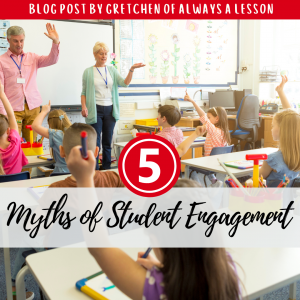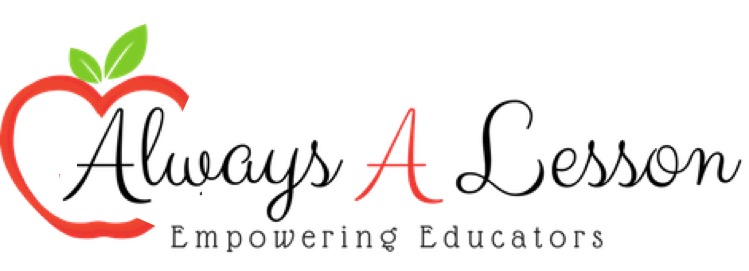5 Myths of Student Engagement
Student engagement is the art of keep students’ attention while simultaneously involving them in the process of their own learning. Teachers find student engagement to be an inviting challenge year after year as student interests and pop culture change. To be successful in engaging students during a lesson, a teacher has to know their content, student learning needs and student interests. Combining those three elements ensure engagement is appropriate and captivating. As a result, student motivation, academic outcomes, sense of belonging and school culture all improve.
 This post will share five myths in regards to student engagement so that teachers can be successful in reaching their students year after year.
This post will share five myths in regards to student engagement so that teachers can be successful in reaching their students year after year.
Myth #1
Behavior engagement requires control.
False. Moving away from compliance habits by replacing them with interactive opportunities allows students to meet behavior expectations without requiring them to. We cannot control people, but we can put boundaries in place for the learning environment. If the behavior expectations are clear and the engagement task is of interest, getting students to comply will be by choice not by force. When students know why they must act a particular way during the learning experience, behavior engagement comes naturally.
Myth #2
Students don’t need to emotionally engage in a lesson.
False. Students want to feel a sense of belonging in the classroom. They want to know their teacher cares about their needs and wants. When students do not feel welcome, they will disengage from their peers and their own learning. In order to prime students for academic growth, they need to feel safe, valued, heard and seen. This emotional engagement leads to an open mind to learn new information while also increasing their motivation to behaviorally engage in the activity.
Myth #3
Critical thinking happens without meaningful content.
False. Cognitive engagement is the most important way students can grow their skillsets. When content is meaningful and relevant, critical thinking is no longer a chore. Students engage their minds authentically because they see the value in learning the information and maybe even find it interesting. When teachers do not take the time to show the connection between the new learning and past learning, or how new learning is important to their future career or aspirations, students lose interest. They stop consuming the information which leads to a lack of skill and knowledge. They will not be prepared for the following grade or the work force. It is imperative content is meaningful to students so they can exercise their critical thinking muscle with ease.
Myth #4
Inclusion has no bearing on student engagement.
False. Including students of varying learning abilities and cultural backgrounds into class discourse has a profound impact on student engagement. When students feel included even when they are different from the what they perceive to be the “norm,” they receive the benefits of collaboration and communication with their peers and teacher. If students need sentence starters, vocabulary wall, or think time in order to successfully engage in discussion, it should be provided. The teacher must support all learners so that they can be successful in the classroom. Student discord allows information in the brain to be processed and stored for later retrieval. If we want new knowledge to stick, students need to talk. In order for students to talk, teachers must provide a safe environment and learning supports for everyone to participate. Inclusion done well opens to the doors to high levels of student engagement.
Myth #5
Creativity and choice are just extras.
False. When teachers are creative in how students can engage during a lesson as well as allow students to share their own creativity in demonstrating learning, achievement outcomes improve. Building in choice honors student interests and strengths causing motivation to participate to deeply increase. Therefore, creativity and choice are not extra’s that teachers can sprinkle into lessons when they desire. Creativity and choice are part of building strong, authentic engagement in the classroom.
Additional Resources
If you’d like to go deeper on the topic of student engagement, additional resources are listed below.
- Blog Posts:
- Podcast Episodes:
- Book:
Want more support? Browse our full collection of printable and digital tools. You can also read more helpful posts on the blog—and don’t miss my latest book: Always A Lesson: Teacher Essentials for Classroom and Career Success.
GO BE GREAT!

